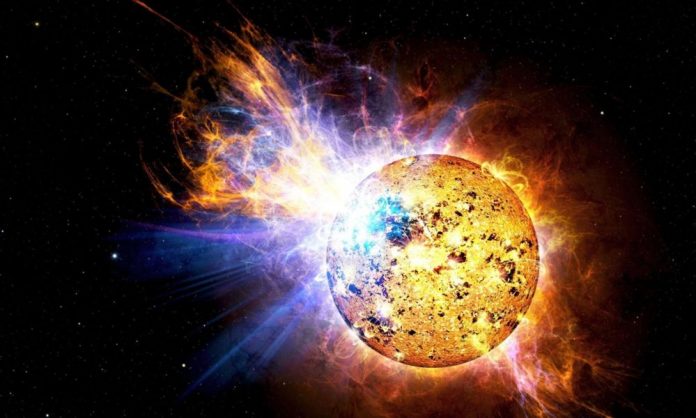A team of astronomers in Japan has detected 12 stellar flares, including a so-called superflare, on AD Leonis, an M-dwarf star located just 16 light-years away in the constellation of Leo.
“Stellar flares are sudden explosions that emanate from the surfaces of stars, including our own Sun,” said lead author Dr. Kosuke Namekata, a researcher in the Department of Astronomy at Kyoto University.
“On rare occasions, extremely large superflares will occur. They result in massive magnetic storms, which when emitted from our Sun can significantly affect the Earth’s technological infrastructure.”
Dr. Namekata and colleagues observed the flaring star AD Leonis using Kyoto University’s 3.8-m Seimei Telescope, NASA’s Neutron Star Interior Composition Explorer (NICER), and the Spectroscopic Chuo-university Astronomical Telescope (SCAT), with the collaboration of the OISTER (Optical and Infrared Synergetic Telescopes for Education and Research) program.
The scientists detected a total of 12 flares, including ten flares in hydrogen alpha (Hα) light, four X-ray and four optical flares.
One of these eruptive events was a superflare with a total energy of 2*1033 erg — about 20 times more powerful than those emitted by our Sun.
“Our analyses of the superflare resulted in some very intriguing data,” Dr. Namekata said.
“Light from excited hydrogen atoms of the superflare exhibited an amount of high-energy electrons roughly one order of magnitude greater than typical flares from our Sun.”
“More information on these fundamental stellar phenomena will help us predict superflares, and possibly mitigate magnetic storm damage here on Earth,” said senior author Dr. Kazunari Shibata, a scientist in the Department of Astronomy and the Astronomical Observatory at Kyoto University.
“We may even be able to begin understanding how these emissions can affect the existence — or emergence — of life on other planets.”





























